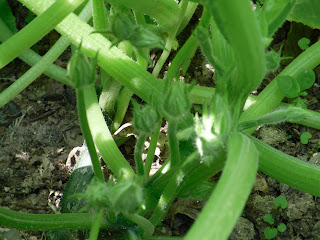Before I started running, I made sure to ask questions about post recovery drinks, what kind of workouts I should be doing, what goals I should aim for, how to run up hills, etc. Some advice I took right away, others I kept in the back of my mind and had to learn for myself (like why I should stick to 5Ks for a while instead of constantly pushing up my mileage or why months of core work over the winter is so important). And some things I just discovered on my own, like how to run with good form to prevent back issues. One thing I never thought of doing, though, was checking out a book on running because honestly how hard is it? I just hit the road and run, right?
Not really.
I first realized this when I was having a lot of lower back pain after my runs. I ran with a friend once who simply told me to keep my arms lower. I was carrying a lot of tension in my shoulders and I had no idea why. It was because I kept my arms up by my chest when I ran, instead of keeping my elbows at a 90-degree angle and keeping my arms near my waist. Do you know how many people run with T-Rex arms? No wonder my back hurt.
I was reminded of this incident when I looked at this book and thought there might be a lot I could learn about the mechanics of running, how to prevent an injury, and how to run more efficiently. I would recommend to anyone that is starting something new to not only ask questions about what you are doing so you understand it but to also read a book by a credible author(s) so you have a good foundation. The authors of this book are two British women, one who is a 14-time marathon runner and training consultant to the London Marathon and the other is a physical therapist for British athletics. I would really like to share with you what I learned, but I would also highly recommend getting a book for yourself, since the topics I’d like to cover were news to me but I may have left out stuff that would be news to others. This book was just like many other running books out there, so if you’d like to read a running book, don’t feel like you have to read this particular one. Just make sure to check the author's background and make sure they know what they are talking about.
Running Drills
I remember doing running drills before ultimate frisbee (we called them plyos). I always just assumed that we were warming up all of our muscles, but in actuality you’re mimicking (albeit exaggerating) different motions you make while running. I had never really thought about our plyos this way and will definitely try to incorporate them more into my warm ups. Which brings me to my next point…
Warming Up and Cooling Down
If you’re like me, you don’t want to waste time warming up. You just want to get in a quick stretch and go for your run, since you’ll already be spending 40 minutes running anyway. The authors emphasized the importance of warming your muscles up before running, and walking to the end of your driveway before your run does not count. Along with the running drills, they incorporated some mobilization stretches that release tension and tightness where you’re most likely to carry it. What I also found interesting was that running does not put your knee through its full range of motion, so your knee does not get entirely lubricated. They incorporated some running-specific activities to cope with this problem. The authors also stretched the importance of cooling down after runs to bring the body back to its normal state and help remove some of the lactate built up in your muscles. After a sprint workout, try to go right from sprinting to standing - you feel dizzy and nauseous because the blood is rushing around your body at an extremely high pace. You need to cool down after a workout in order to bring your body back to equilibrium. From now on, I’m going to make myself at least jog around the block before setting out on my run, and maybe even ending my run a block or so from my house, forcing me to walk back and cool down.
Stretching
I’ve said it before and I’ll say it again: I love stretching. I have noticed time after time that when I don’t stretch after a frisbee game or a hard run I am exponentially sorer the next day. I knew it helped your muscles recover and repair themselves, but I never knew how. This book allowed me to understand the biometrics of running and in turn why it is so important to stretch. When your feet hit the pavement, your muscles are constantly contracting. Stretching lengthens them back to their normal length and helps realign the fibers within your muscles, preventing your muscles from shortening permanently and putting your joints out of alignment. Also, people tend to stretch only three muscles: the calves, the quads, and the hamstrings. But you’re leaving out some of the most important running muscles: the hip flexors and the adductors. I have a whole arsenal of stretches I use after my runs and I usually stretch for at least 15 minutes. Maybe one day I’ll just have a whole post on stretching…
Core Stability
Over the winter, I was doing ab workouts 4 days a week to build a strong core. I never really understood why until I went on my first run of Spring. You need a strong core to support your top half and to power your legs. A strong core also gives you good form, which will help prevent injuries. This book taught me that a strong core can also relieve some of the stress on muscles in your legs, such as the muscles in the front of your hip, and keep your pelvis stable while your legs are moving. These exercises are low load and therefore can be done every day, something I’m going to try to incorporate into my morning routine, especially since I’m spending less and less time at the gym since it’s been so nice outside.
This is just a fraction of what I learned from this book; there were also sections on nutrition, diagnosing an injury, picking the right running shoe, and how to come back from an injury. I did not go into much detail for the sake of keeping this post short, so please feel free to contact me should you have any questions. For anyone starting something new, whether it’s running or cooking or going on your first backpacking trip, I would highly recommend reading up about it first. And after you have this foundation, be sure to always ask about why you are doing something so you have a good understanding of what you’re doing.
Disclaimer: The views that I express in this review are my own and I was in no way contacted by the authors or compensated for my time. Again, I picked this book based on the credibility of the authors and if you would like to read up about running, any book at your library written by someone with knowledge of the field would suffice.

























